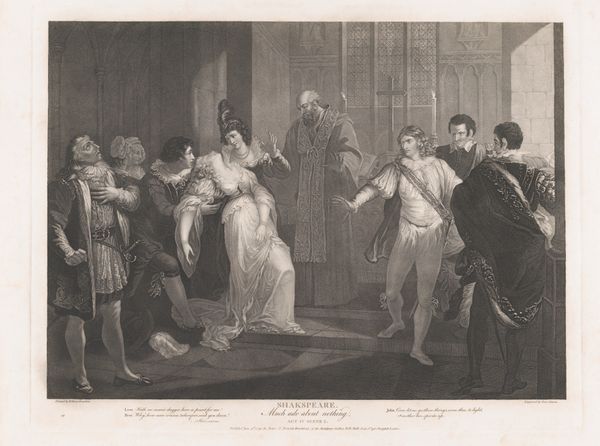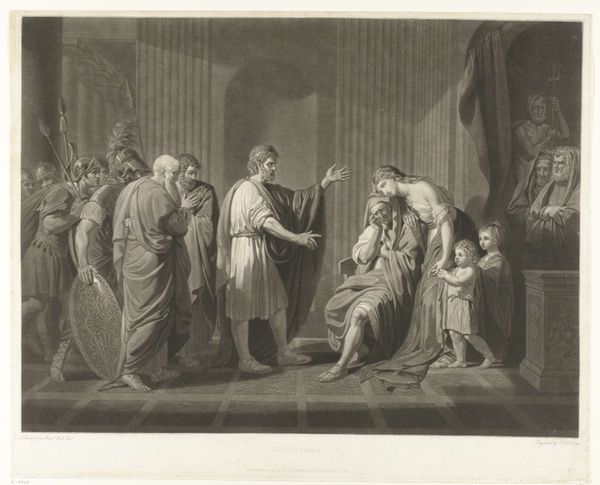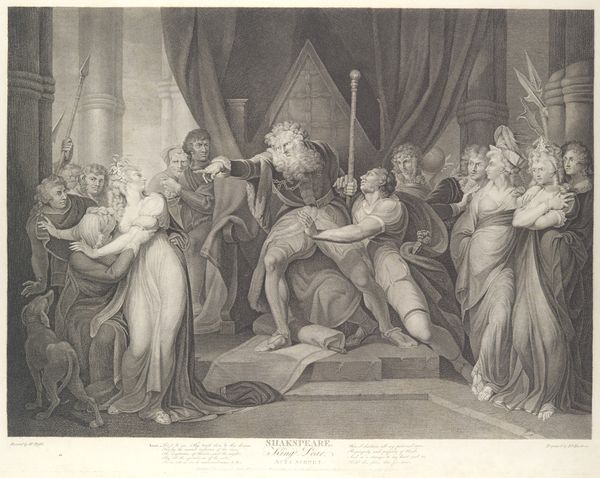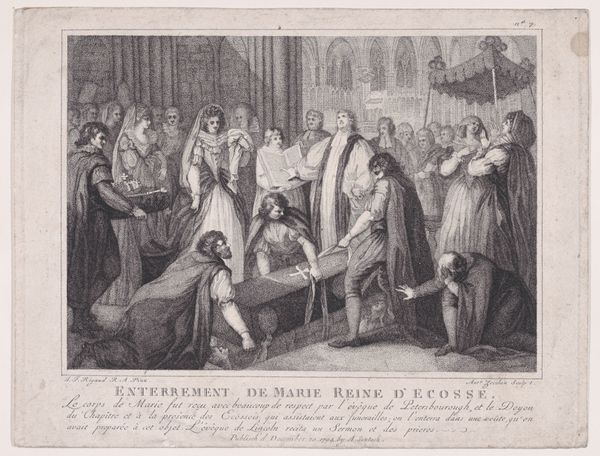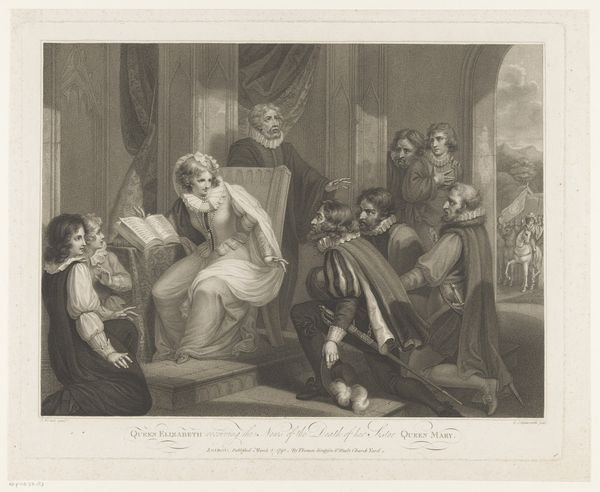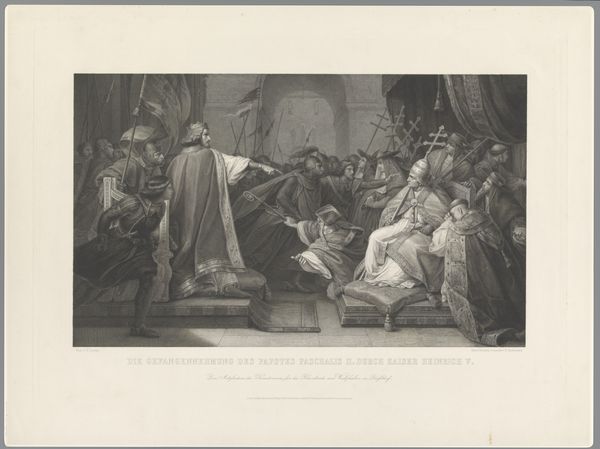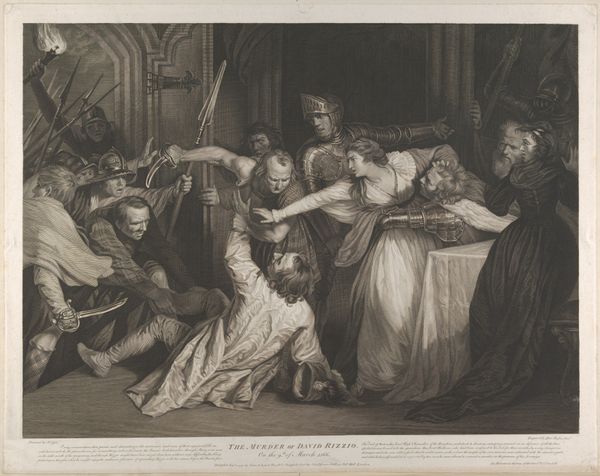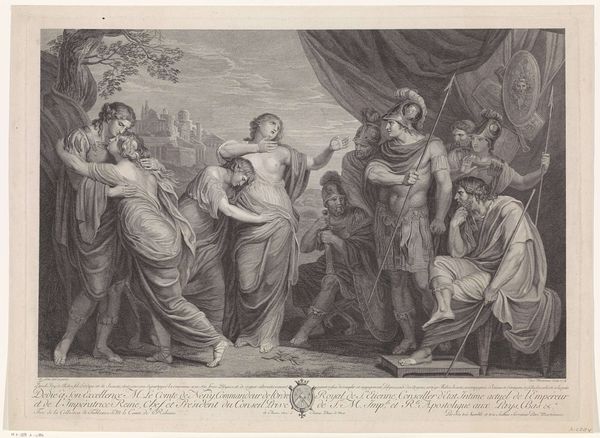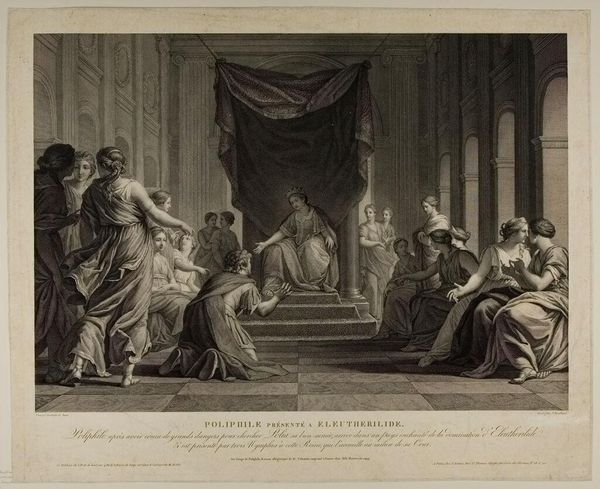
print, engraving
#
portrait
#
neoclacissism
#
narrative-art
# print
#
classical-realism
#
figuration
#
form
#
pencil drawing
#
line
#
history-painting
#
academic-art
#
engraving
Dimensions: height 380 mm, width 470 mm
Copyright: Rijks Museum: Open Domain
Editor: This engraving, "Jeanne d'Arc ontvangt de gewijde banier," or "Joan of Arc Receiving the Consecrated Banner," made sometime between 1792 and 1797 by Francesco Bartolozzi, it strikes me as a moment caught between reverence and military purpose. What aspects of the print draw your attention? Curator: Oh, what a divine moment to witness, truly. My gaze always drifts to Joan’s kneeling figure, poised and clad in armor, yet utterly humbled. It is almost theatrical. The light seems to pool around her. Isn’t it compelling how Bartolozzi uses the graphic medium to convey texture, from the cool metal of her armor to the Bishop's soft, billowing sleeves? It really elevates this depiction beyond just historical documentation. What does this emphasis of texture mean to you, practically? Editor: It almost makes the scene more believable and palpable. It adds this human quality, I think. The scene feels so… grand. Is that on purpose? Curator: Grand, precisely! Think about the historical context, the late 18th century. Neo-classicism was all the rage. This piece borrows its visual language—order, clarity, idealized figures—to elevate Joan of Arc to near-mythical status. Bartolozzi presents her not just as a warrior, but as a symbol of faith and French national identity. But I do see it slightly different. Where I see a story of faith, you also find this story in a human scale. How about that? Editor: I see it now! Faith meets reality! Curator: Indeed! I see so many layers of intent here! Every time I see this artwork I see an old world telling its old stories in new and wonderful ways. A true neoclassical treasure.
Comments
No comments
Be the first to comment and join the conversation on the ultimate creative platform.

